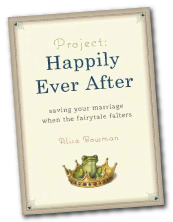Did the man in the wheelchair need help? I was too wimpy to ask.
 Some thoughts on the intersection of bravery and love
Some thoughts on the intersection of bravery and love
 On a rare just-warm-enough-to-take-all-your-worries-away summer day, I was on one of those elusive carefree runs during which every footfall came easily and no part of my body was in pain. The sky reflected off the water. Beams of light poked their way through the trees. Birds danced in the sky.
On a rare just-warm-enough-to-take-all-your-worries-away summer day, I was on one of those elusive carefree runs during which every footfall came easily and no part of my body was in pain. The sky reflected off the water. Beams of light poked their way through the trees. Birds danced in the sky.
Then I passed the man in a wheelchair.
His chair was situated at an angle, with his back to the river, which was odd because the river was what people usually came to take in.
His body was slumped and crooked, as if his spine was shaped like the letter S.
As I approached, I couldn’t figure out how he’d gotten there. The trail wasn’t paved and we were a good distance from the nearest parking lot. It looked as if his chair was motorized, but was it designed to travel across grass, ruts and gravel? He was sitting in full sun, his chest bare, his skin hot and sticky looking. His head hung to the side and shoulders slumped forward as if all of the muscles in his shoulders and neck had surrendered. His mouth was slightly agape.
Because of his reflective sunglasses, I couldn’t tell if his eyes were open or closed.
My first instinct was to ask, “Are you okay?
Yet, as the distance between us disappeared, my mind put the brakes on that urge with a series of “what if…” worries: What if he’s peacefully asleep and I ruin a rare moment of serenity? What if this is how he always looks and I’m the hundredth person to annoyingly ask him if he’s okay? What if he’s perfectly capable of looking after himself and sick of able-bodied people like me assuming otherwise? What if he attacks me? How will I possibly help him anyway? My phone is at home and my car a good two miles away.
About a football field’s distance away, in a parking lot, I noticed a young mother with a stroller. She was near the open trunk of a car. I thought, “Oh, maybe they’re together and she’s just packing up some stuff before she comes back to get him.”
I ran a few more steps. I looked behind me. There was another runner: She’ll help him.
As I ran on, however, I couldn’t get the image of the man in the wheelchair out of my mind. Wasn’t it irrational to assume the woman with the stroller was with him? What mother puts her baby in a hot car and then walks a football field’s distance to retrieve a man in a wheel chair? Of course they weren’t together!
As for my assumption that someone else would help? Equally flawed. Many years ago, as part of the now famous study “From Jerusalem to Jericho”, a group of seminary students were told to hurry to another location on campus so they could prepare a talk about the Bible’s Good Samaritan parable. In the event you don’t remember the parable, there’s a man on the side of the road, beaten, naked and half dead. A priest walks by, sees him, and walks to the other side of the road to avoid him. So does the next passerby. Then comes the good Samaritan who finally takes pity on the poor man, bandages his wounds, puts him on a donkey and takes him to an inn for help. At the end of the parable, we’re encouraged to emulate the Samaritan.
Back to the seminary students. As they rushed across campus, they passed a slumped man in an alleyway. Given what their lecture was about, you might assume that every single one of the students offered to help the man. That’s not what happened. Only one in ten of the hurried students stopped and offered to help, despite the fact that they were on their way to prepare a lecture about exactly this type of situation. (An interesting side note: students who were not told to rush were much more likely to help than were students who thought time was of the essence).
You know? I like to think of myself as a helper. Years ago, when I first heard of the study I just described, my exact thoughts were, “I would have been one of the people who stopped to help.”
Ah-hem.
My run was a 4-mile loop and, as I turned to loop back toward my car, it occurred to me that tomorrow’s paper would likely have a story about a man found dead at the park. In the story would be a quote from a park official, “Apparently he was out there in the elements for hours and not one person offered assistance. This certainly says a lot about the crappy world that we live in.”
I had a responsibility, didn’t I?
But just as I was deciding to go back and help the man, my inner wimp raced from one neuron to another, screaming, “No! Not you! Let someone else be today’s good Samaritan!”
I thought of Kayt Sukel’s Ted Med lecture on the nature of risk. (You can watch it here.) Had I not promised myself that I would take a risk every day? Wouldn’t helping this man count as a risk? There was risk involved in overcoming fear of the unknown, was there not? After all, while I could control how I approached the man, I could not control his response. That’s where the fear came in, and why my wimpy lizard brain had first put the brakes on helping him.
As I got closer to where he was sitting, I did something I hadn’t done the first time. I waved and yelled “Hello!”
To my surprise, he smiled and waved back.
I almost left it at that, but then I asked, “Do you need help?”
He said he did not.
See? There’d been nothing to fear.
Not only was I able to run back to my car with a clear conscience, the experience taught me a lesson on the nature of love: it’s scary. Love often requires us to leave our comfort zone: to sit with someone who is upset, to ask hard questions, to listen to hard answers, to be vulnerable and, yes, to offer assistance to someone who might not need or want it. Many times, while we can control our intention, we cannot control over how someone will interpret our words or actions. Sometimes an act of love is received with open arms; other times, it is rebuffed, ignored, or even attacked.
To love one another, we must be brave.
Being brave requires practice.
The practice is not always easy. It can be painful, scary, lonely, and humbling and, yet, it’s always worth it.
Note: Some of you have been brave enough to ask me why it’s been six months since my last post. I appreciate your concern. Nothing is wrong. I am trying to return to a somewhat regular blogging schedule. Thanks for waiting patiently!

Learn more about Alisa's book, the story of how she went from wishing her husband dead to falling back in love.
To find out how the book has changed lives click here.Want to discuss Project: Happily Ever After at book club or your church group? Click here for an entertaining guide.
Go to ProjectHappilyEverAfter.com for more marriage advice or to converse with other recovering divorce daydreamers.
No related posts.








 Related StoriesThe Affection-Starved Marriage
Related StoriesThe Affection-Starved Marriage



